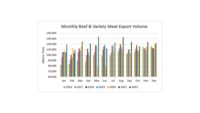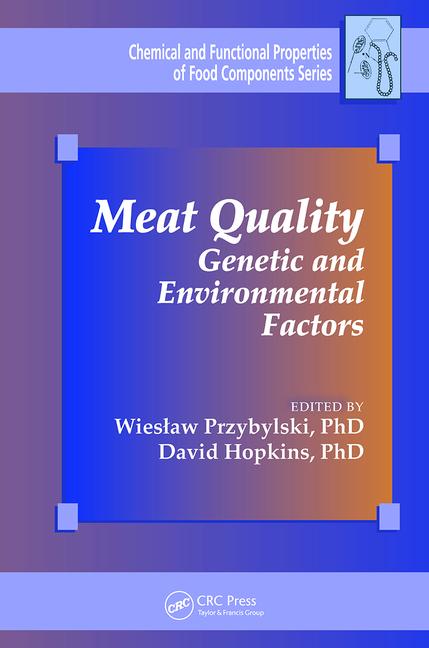U.S. Pork Giant Going Global
By Barbara Young, Editor-In-Chief
photos by Vito Palmisano
Vertical integration is the route to glory for Smithfield Foods. That has not changed. The company now is gaining new opportunities abroad seeking to replicate its success in America.
A true farm-to-fork company, VA-based Smithfield Foods’ success is based on visionary leadership, shrewd mergers and acquisitions, a sales-driven product marketing strategy, and modern, efficient facilities fortified by the recent achievement of ISO 14001 certification — governing all its U.S. hog production and 50 U.S. manufacturing sites.
Moreover, Smithfield and its more than 46,000 associates are responsible for producing and marketing value-added pork, beef, and turkey products to generate more than $11 billion in annual sales. Smithfield raises 14 million hogs a year in the United States for a 14-percent marketshare, processes 27 million annually for a 27-percent marketshare, and manufactures 5.1 billion pounds of pork products a year. Since 1975 when Smithfield went public, investors have benefited from a 26-percent average annual compounded rate of return.
Smithfield’s international diversification strategy implemented in 1999 led to acquisitions in Poland, France, Spain, the United Kingdom, and Romania, along with joint ventures in Brazil and Mexico. International sales total $1 billion.
The company’s strides this past year simply added more building blocks to decades of operational, marketing, and product-development achievements.
As others regroup or else retrench, Smithfield Foods just keeps marching forward. With the recent addition of cattle feeding to its operating model, the company strengthened its position as a vertically integrated business. It also continued its strategy of growing processed meats, pursuing opportunities in Europe, and increasing its presence in the foodservice channel.
Its over-all processed meat volume rose 14 percent, with the Farmland side of the business growing by 3 percent on its own. Smithfield acquired Farmland Foods — the sixth largest pork processor in America producing 1 billion pounds of fresh pork and 500 million pounds of processed meat — in 2003.
Retail marketshare gains in 2004 were achieved in several product lines, including hot dogs, dinner sausage, and breakfast sausage. Toward the end of 2004, Smithfield acquired pork operations in Poland and Romania, and recently acquired a 22-percent interest in Campofrio, a Spanish pork processor with 29-percent marketshare in Spain and one of the largest European meat processors.
This year’s recognition of Smithfield marks the third time it has been cited as The NATIONAL PROVISIONER’s Processor of Year. Moreover, Farmland Foods, a meat-industry standard-bearer in its own right, also is listed in the magazine’s Processor-of-the-Year hall of fame.
In recent conversations at company headquarters in Smithfield, VA, C. Larry Pope, president and chief operating officer, reviewed the company’s operating strategies while also outlining plans for future growth. Meanwhile, Joseph W. Luter IV, president of Smithfield Packing Company, oversees the business unit that seeded the company his father practically built from scratch. The discussion with Luter IV takes place less than a mile away from the modern and architecturally impressive administrative center in the simple three-story gray stone granite building and original company headquarters. Independent operating companies represent the cornerstone of Smithfield’s corporate structure, which focuses on an entrepreneurial business approach with financial and other resource backing of a complex organization.
“We have these fiercely independent companies that operate on the premise that the job is selling customers by doing what customers want,” Pope emphasizes.
Other management executives include the following:
Timothy Seely, president of Gwaltney of Smithfield and a 34-year industry veteran with a 22-year association with Smithfield
Joseph Sebring, president and chief operating officer of Cincinnati, OH-based John Morrell & Co., and a 28-year industry veteran with 11 at Smithfield
George Richter, president and chief operating officer, Farmland Foods since 1995 and a 33-year industry veteran with two years at Smithfield
Jerry Godwin, president and chief operating officer of Murphy-Brown LLC since 2001 and a 10-year industry veteran with five at Smithfield
Richard Vesta, president and chief executive officer of Packerland Packing since 1993 and a 36-year industry veteran with three at Smithfield as head of the Smithfield Beef Group
As the nucleus of Smithfield, Joseph W. Luter III is the conductor guiding the orchestration of various business enterprises. Pope is the facilitator.
“We now have all the pieces in the orchestra, and can service customers at every level,” Pope says. “We have hogs down here that we are raising, and that drives our profitability. When you are not making money in the meat business, you can make it raising hogs, which is tremendous financial security to continue to execute the marketing plan.”
Smithfield is eying a marketing strategy with future potential to grow Smithfield and Gwaltney brands.
“We have strategically moved down the road of differentiating these two brands and have visions for taking the Smithfield brand national in time,” Luter IV explains. “We want the Smithfield brand to be top of class.”
Down the road 10, 15, or 20 years there will be a clear distinction in the minds of consumers concerning the two brands, Luter IV predicts. “We believe the raw material, the product, and the packaging to be as good or better than any national brand out there today,” he says. “The Smithfield brand is on the high road in terms of quality. It will cost more money, but we are committed to producing a quality product to make our brand the best in class within the meat business and it will be priced as such. For example, we now naturally smoke all Smithfield bacon because we believe that is a better product. We use all pork and beef in our smoked sausage and no poultry because we believe that creates a better product. We are using quality meat blocks for our retail ham products.” The strategy for building the Smithfield brand calls for increased consumer marketing, and the company has allocated a budget of several million dollars for this fiscal year. The category focus for products under the Smithfield label include fresh meats, smoked and packaged hams, bacon, and smoked sausage.
Gwaltney is designated “the fighter brand” featuring an every day low-pricing concept for hot dogs, luncheon meat, and bacon with no consumer marketing.
“For years certain product categories competed from a price standpoint by battling one another,” Luter IV points out. “We aim to differentiate the two so that they don’t compete directly with one another. We believe there is a consumer out there for both products. The goal is to have each brand focus on its strengths. We don’t aspire to this in the next two fiscal periods. We also are cognizant of what our sister companies are doing in the Midwest. Our focus is on growing the strong brands we have while also going national with the Smithfield brand as a long-term strategy.”
Luter IV says private label business keeps Smithfield’s plants full.
“We are committed to private label and our private label customers,” he confirms. “We have another strategy called trade channel diversification for breaking business down into trade channels including foodservice, deli, international, and retail. Smithfield and Gwaltney are underrepresented in foodservice and deli. We are focused on growing those two trade channels by taking share from the competition.”
Pope, meanwhile, is looking at Smithfield’s future with the world in mind. “Right now Smithfield is a big U.S. company with an international presence,” he concludes. “Fast-forwarding five years will find us a global company in a much bigger sense than we are today.” NP




Report Abusive Comment